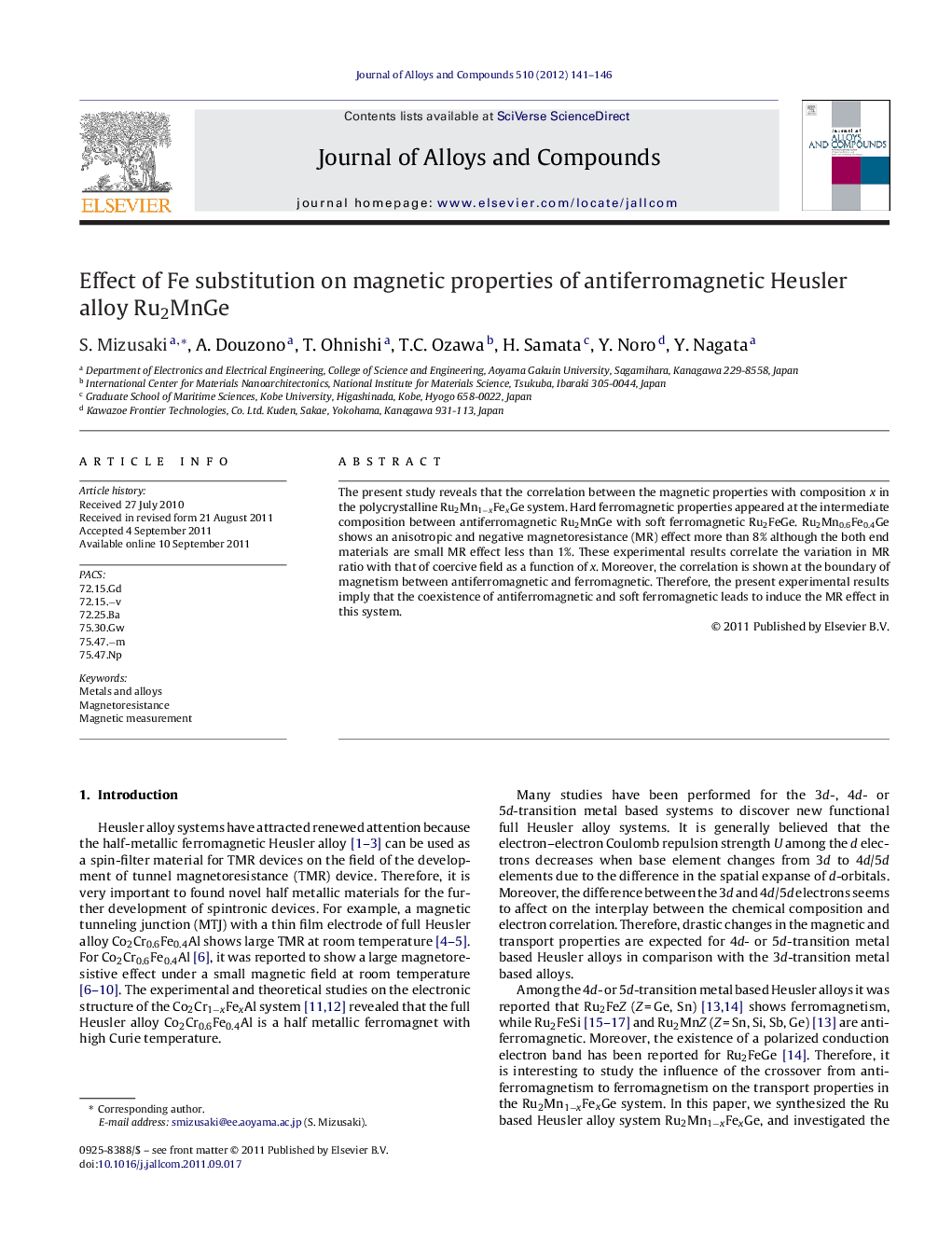| Article ID | Journal | Published Year | Pages | File Type |
|---|---|---|---|---|
| 1616674 | Journal of Alloys and Compounds | 2012 | 6 Pages |
The present study reveals that the correlation between the magnetic properties with composition x in the polycrystalline Ru2Mn1−xFexGe system. Hard ferromagnetic properties appeared at the intermediate composition between antiferromagnetic Ru2MnGe with soft ferromagnetic Ru2FeGe. Ru2Mn0.6Fe0.4Ge shows an anisotropic and negative magnetoresistance (MR) effect more than 8% although the both end materials are small MR effect less than 1%. These experimental results correlate the variation in MR ratio with that of coercive field as a function of x. Moreover, the correlation is shown at the boundary of magnetism between antiferromagnetic and ferromagnetic. Therefore, the present experimental results imply that the coexistence of antiferromagnetic and soft ferromagnetic leads to induce the MR effect in this system.
► Hard ferromagnetic material appeared by mixing antiferromagnetic material Ru2MnGe with soft ferromagnetic material Ru2FeGe for polycrystalline material. ► Large anisotropic negative magnetoresistance (MR) effect (MR ratio: ∼10%) is shown in bulk material by mixing antiferromagnetic material (MR ratio < 1%) with soft ferromagnetic material (MR ratio < 1%). ► The experimental results correlate the variation in MR ratio to that of coercive field as a function of ratio between Ru2MnGe and Ru2FeGe. ► The correlation was shown at the boundary of magnetism between antiferromagnetic and ferromagnetic. ► The coexistence of antiferromagnetic and ferromagnetic leads to induce the MR effect in this system.
